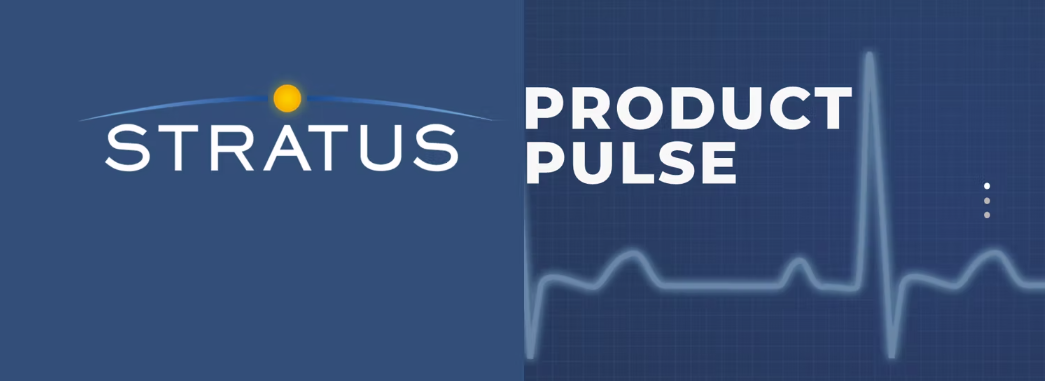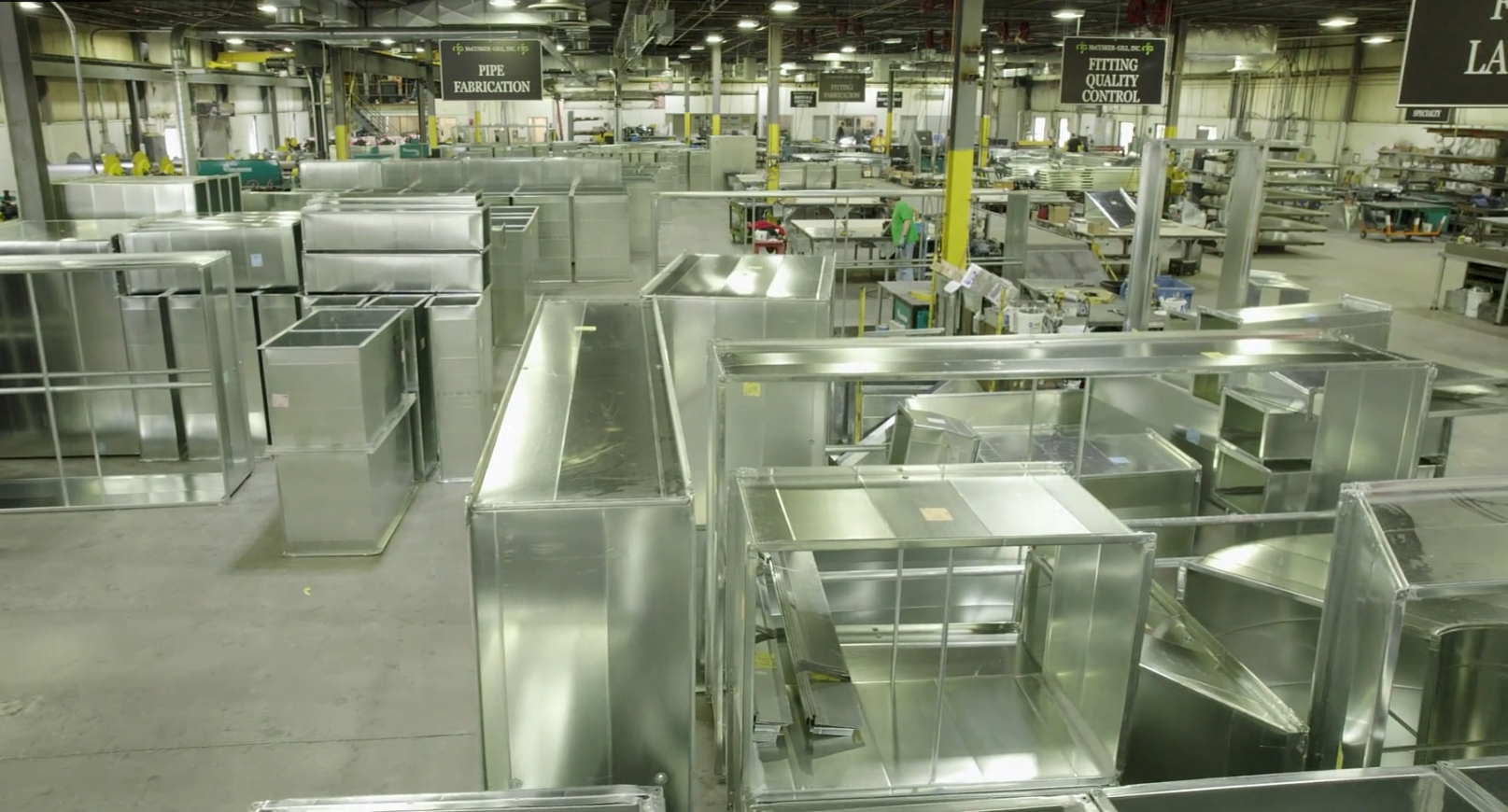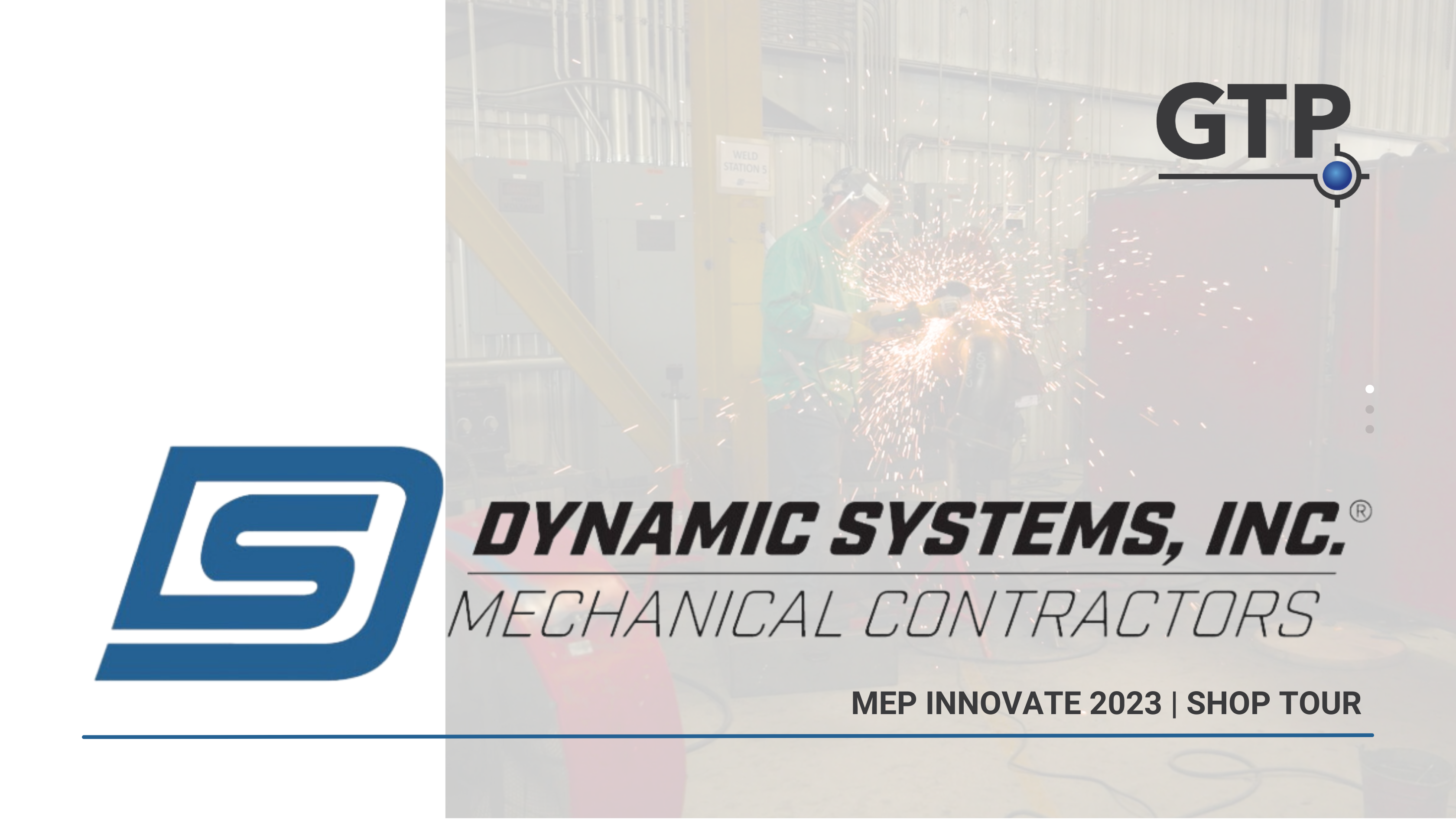During the MEP Innovation 2023 conference I had the opportunity to attend, the President of McCusker Gill Inc., Kevin Gill Jr.’s class on “Getting Buy-In on New Technology”. I also worked closely with McCusker-Gill during their implementation of STRATUS. What he shared resonates not only for new STRATUS users but any company looking to implement new technology.
McCusker Gill Inc., is a proud second-generation sheet metal contractor family business located in the Boston area. They boast around 350 employees and generate approximately 100 million in revenue annually. McCusker-Gill specializes in complex projects in the healthcare and life sciences sector and places a strong emphasis on prefabrication. In November 2020, they implemented GTP Software’s product: STRATUS, which has proven to be a successful addition to their company.
Despite the willingness of contractors to try new products, implementing organizational change can be a difficult task with a 70% failure rate according to a study by McKinsey. During the first half of Kevin’s presentation, he discussed a comprehensive study conducted by New Horizons Foundation on the best practices for new technology implementation and found that companies who successfully adopt new technologies share eight key practices.
The main objective of his talk was centered on providing actionable information to help other contractors become more knowledgeable and ultimately more profitable in their adoption of new technologies. In the second half of his presentation Kevin discussed how McCusker Gill's successful implementation of STRATUS exemplifies those eight key practices. They are ranked in order of the most highly correlated with a successful outcome:
- Finding your effective change agents or champions
- Enough resources
- Having a realistic timescale or schedule for implementation
- Adjusted workload
- Clear understanding of personal benefits
- Measuring performance benchmarks
- senior leadership commitment
- clear action steps for carrying out the change
To introduce the case study Kevin described what STRATUS is: "Stratus is a cloud-based software that for HVAC sheet metal contractors can manage the contractor's entire workflow. Project managers, field foreman are able to have great visibility into their projects via the Revit model. It creates for a paperless workflow that really streamlines the prefabrication process. Our field foreman are able to go right into their Stratus account, into the model, tell us exactly how they want the job to be built. We sort them in chronological order and we manage that whole workflow through Stratus."
He went on to show some snapshots of the process in STRATUS. Comparing what they had to do before in a paper workflow, Kevin stated: “We'd print out 2D copies, send them to our prefab department. There were five or six steps in that process that now the former just goes in and with the click of a couple of buttons, that whole process has been streamlined. We've saved all those emails. We've gotten away from all of that paper.”
Kevin showed an assembly with 11 different components that a foreman asked to be prefabricated. It had seven individual pieces of duct work, an air valve with a spiral high efficiency takeoff that has an integral damper with two shop access doors. Ten years ago they would have all gone out to the job site loose in five different deliveries. Now all those components are either shop fabricated using STRATUS or they’re releasing the equipment in time to prefab with STRATUS.
Regarding the selection process…
The decision was driven by McCusker-Gill’s philosophy to constantly evaluate new products and adopt ones that can make them more efficient. Kevin stated, “we want to hear about what the latest product is out there. If there's stuff that's out there that can give us a chance to become more efficient, we want to hear about it. We want to be early adopters. We want to stay ahead of our competition.” They did so when they first partnered with Autodesk and participated in a peer group since Revit was further along for piping than sheet metal.
After evaluating several competing products, STRATUS immediately presented opportunities for efficiencies in the BIM/VDC department. For example, by reducing some time-consuming tasks that required a lot of manual entry for one person, they could immediately cut back on $10,000 in labor and free up 100 hours of manpower within that department. Overall, GTP’s STRATUS along with its broader suite of products aligned with the company's short-term and long-term goals to streamline the prefabrication process and become paperless.
Key Practice #1: Finding your effective change agents or champions
McCusker-Gill exemplified the key step of finding effective key change agents or champions by assembling a task force consisting of influential company management and well-respected members of various departments. Kevin and two people from the BIM department were particularly important as change agents. The task force met regularly to evaluate goals, set priorities, and review progress. These meetings were critical in ensuring the implementation received the necessary resources. The task force assigned different assignments and reported on progress to make sure the implementation was on track.
Key Practice #2: Enough Resources
Kevin described the adjusted workload of one person in particular who they chose to dive in to learn and customize STRATUS. “Looking back on it today” he said, “it was a great decision and definitely played a big part in how successful the implementation was.” Additionally, they took a phased approach to rolling out STRATUS, starting with beta testers from each department and giving in-person training and feedback to their 50 field foremen. They selected six or eight of them that were especially open minded about change, willing to give new ideas a try. They started using STRATUS just for a couple of functions and brought them back in to hear their feedback and made adjustments.
Key Practice #3: Having A Realistic Timescale or Schedule For Implementation
Like any company, there are many short-term pressures and common fire drills related to running a business. However, they did not let everyday pressures minimize their dedication and patience with the implementation process. Regarding why sufficient time is vital to have a long-term strategic vision, Kevin stated, “these bigger implementations take time, and so having a realistic timeline at the outset is critical […] We really wanted to kind of step back and make sure we had this right. We really wanted to vet this out, incorporate feedback where we could and make the product as perfect as possible before we rolled it out to the masses. And we were able to get a lot of really good feedback from the form. And going back to what I talked about earlier, because we incorporated their feedback, we listened to their suggestions, and we made changes where we could.”
Kevin emphasized taking small wins along the way and not expecting a sudden overnight change. “Those wins, we started getting a buzz through the company and we were able to get buy in from our people from day one because we didn't ask them to do too much too soon. We took a product and improved it as much as we could, and then we asked them to just do a couple of things, and that was critical to getting their buy in.”
Key Practice #4: Adjusted Workload
McCusker-Gill gave their users time to properly learn how to perform their tasks in the new way and made sure change agents had enough time to provide the necessary training to ensure the change's success. Regarding McCusker-Gill having a realistic timeframe from the onset, Kevin stated: “Implementing the change itself is often more time consuming than whatever the underlying task is that we're trying to change, right? So it's critical for our organizations to adjust the workload of both our people whose task is changing and also the change agents and the champions who are training those people.”
Key Practice #5: Clear understanding of personal benefits
McCusker-Gill identified the tasks that were time-consuming and annoying for employees, which took them away from their core responsibilities. They then presented how STRATUS was a solution that could eliminate this waste and allow them to focus on what they enjoy doing. The change agents communicated the positive benefits of STRATUS to employees, assuring them that the change wouldn't have drastic negative impacts. They also addressed the emotional side of the change, recognizing that some people may be resistant or scared of change. They promised to train, support and be with employees every step of the way during the transition.
Key Practice #6: Measuring Performance Benchmarks
“If we can't measure it, we can't improve it”, Kevin said introducing the sixth point. He emphasized the importance of measuring quantifiable benchmarks at three- and six-month milestones while implementing STRATUS. Patience with implementation did not mean they neglected assessing their return on investment (ROI) of the change. By setting benchmarks and measuring performance at regular intervals, they were able to track the progress of the implementation and identify areas for improvement. The results of these measurements could then be used to demonstrate the effectiveness of the change and get buy-in from employees.
A clear example of why measuring performance benchmarks is valuable was in the case of their manifolding and spooling process. Prior to STRATUS, McCusker-Gill realized significant savings in manifolding their ductwork. The process involved three departments: Field, VDC, and Manufacturing. The role of determining where to section and break the ductwork was previously handled by the field foreman, who used a paper workflow with Bluebeam. This process resulted in a considerable amount of waste in creating documents and having the field foreman mark it up in Bluebeam, only for the VDC department to transfer it to their Revit drawings. With the implementation of STRATUS, the VDC department now has considerably more time to work on modeling and is no longer involved in the spooling process. Each spool/manifold previously took nearly 7 minutes to complete, and with approximately 10,000 assemblies a year, this amounted to 833 hours per year. In the Boston market, a sheet metal worker is $125/hour, resulting in a savings of $104,000 per year.
Key Practice #7: Senior Leadership Commitment
McCusker-Gill believed that the commitment of senior leadership is critical to the success of implementing new changes, such as STRATUS. “We had the support of company management from day one,” Kevin said confidently.
Kevin explained how senior leadership plays an integral role in creating an environment that fosters the change and maintains the company's focus on the change objectives, even if the process takes years. This commitment also trickled down to other aspects of change implementation, such as managing the workload, providing training, and communicating the benefits to employees. senior leadership can help ensure the success of the change implementation. The unwavering support for the change and communication of that support to employees helped their company understand, accept and locked-in buy-in for the change.
Conclusion
In conclusion, Kevin's class was a highly impactful learning experience as it shed light on the crucial role of buy-in in implementing change effectively. My experiences as a participant in both successful and unsuccessful software implementations, as well as observing clients' journeys, have solidified my appreciation for the need to consider both tangible and emotional factors to generate buy-in. The 8 key principles outlined in the New Horizons' white paper provided a comprehensive approach to ensuring buy-in by emphasizing the importance of adjusted workloads, sufficient time, support, communication, and patience. McCusker-Gill's senior leadership truly set the bar high with their unwavering commitment to change and their inspiring demonstration of leading by example during the STRATUS Implementation. Overall, this experience has taught me that buy-in is not just a matter of resources, but a collective emotional investment that can make all the difference.

.png?width=70&name=Untitled%20design%20(12).png)


